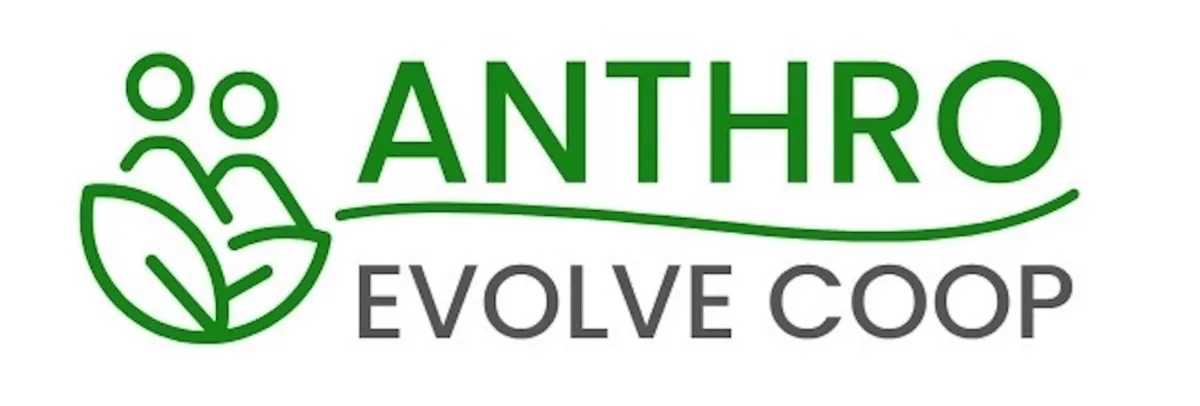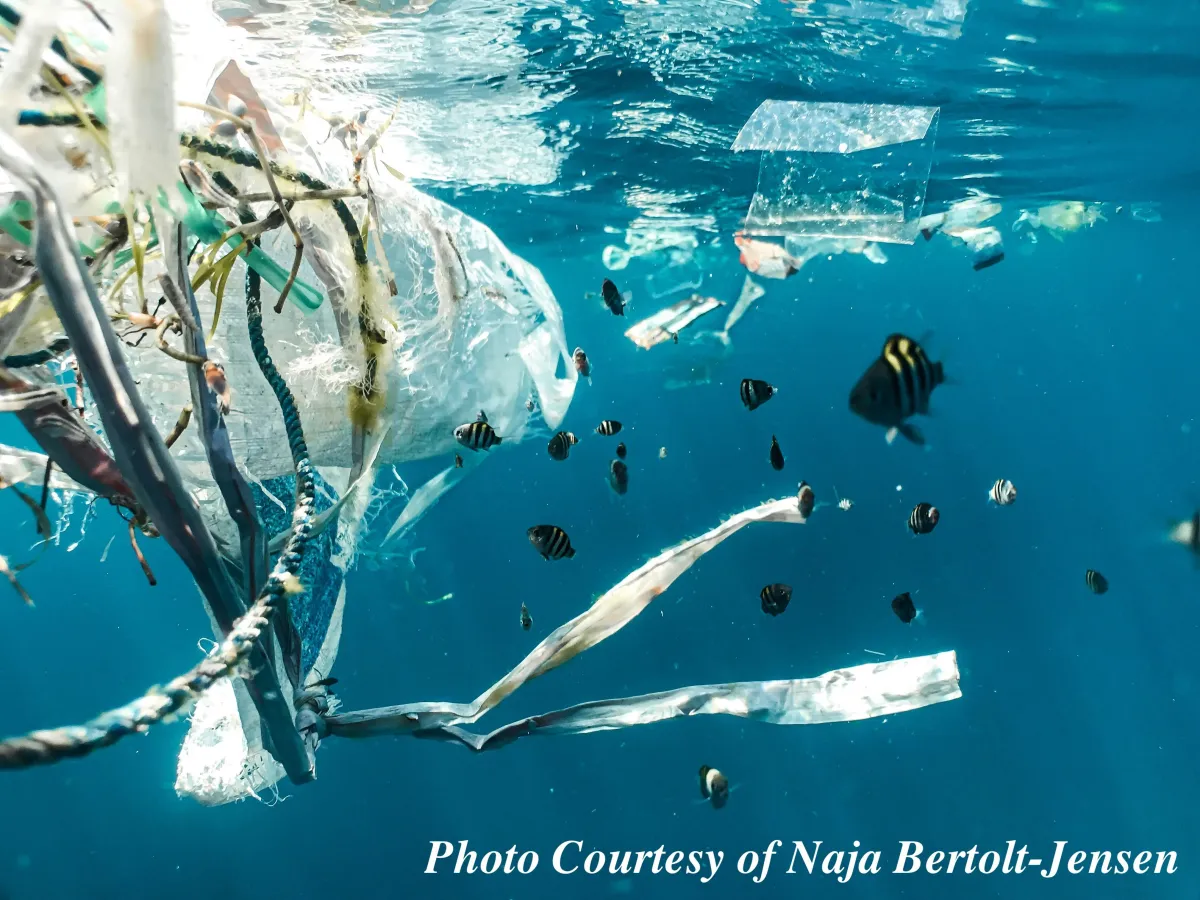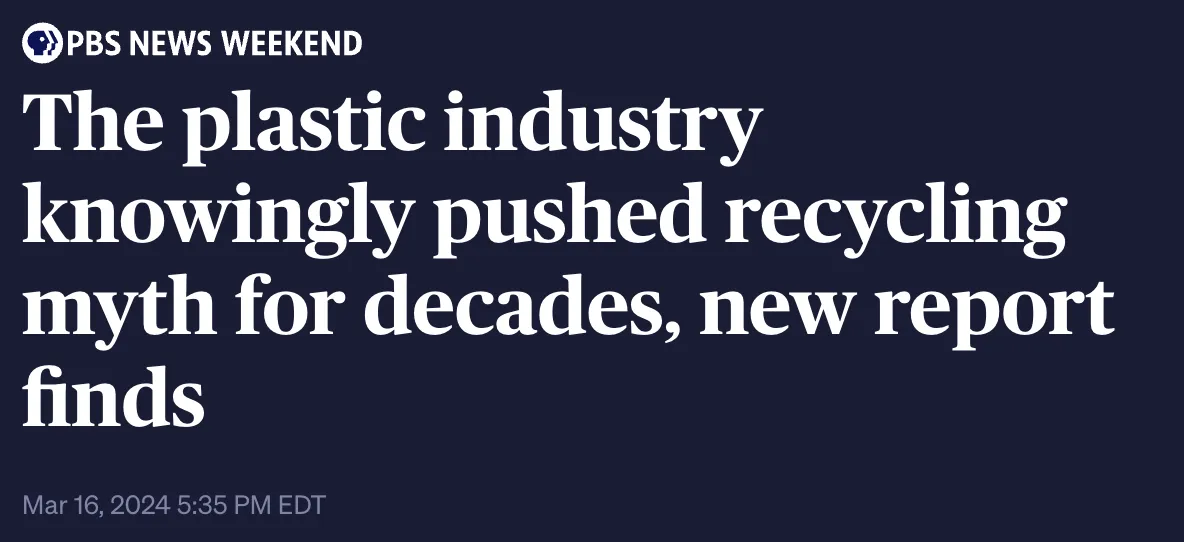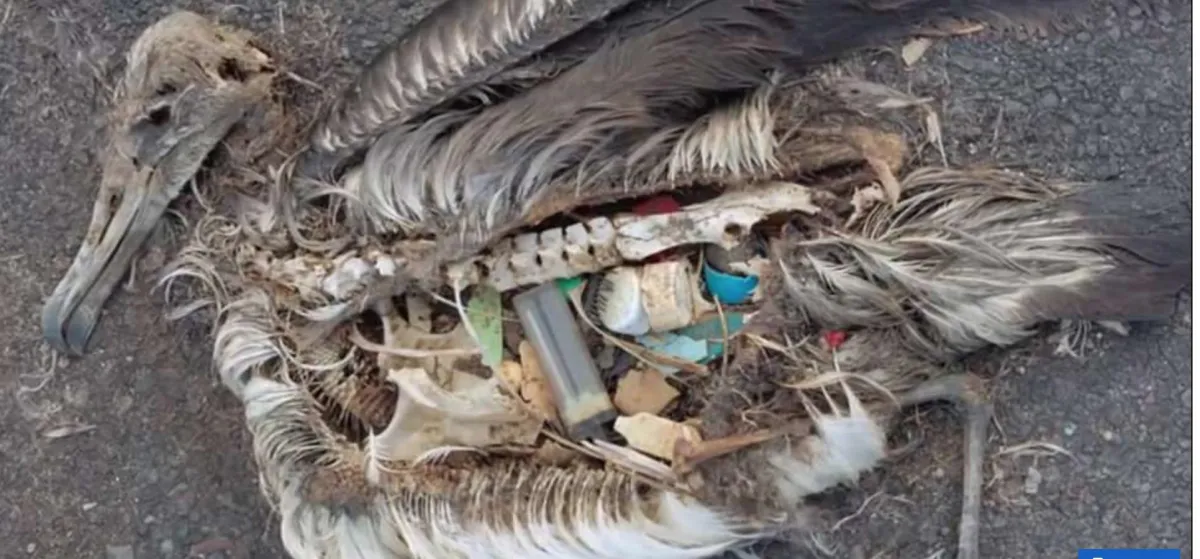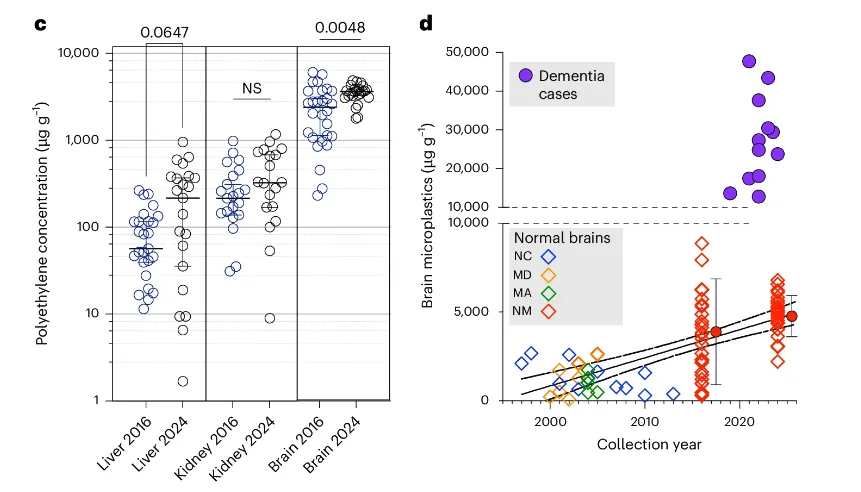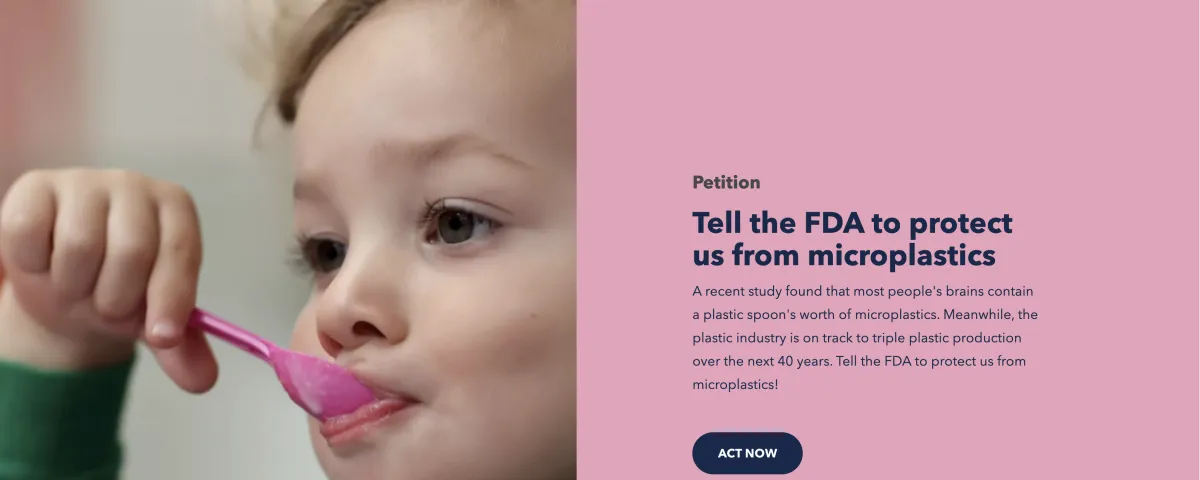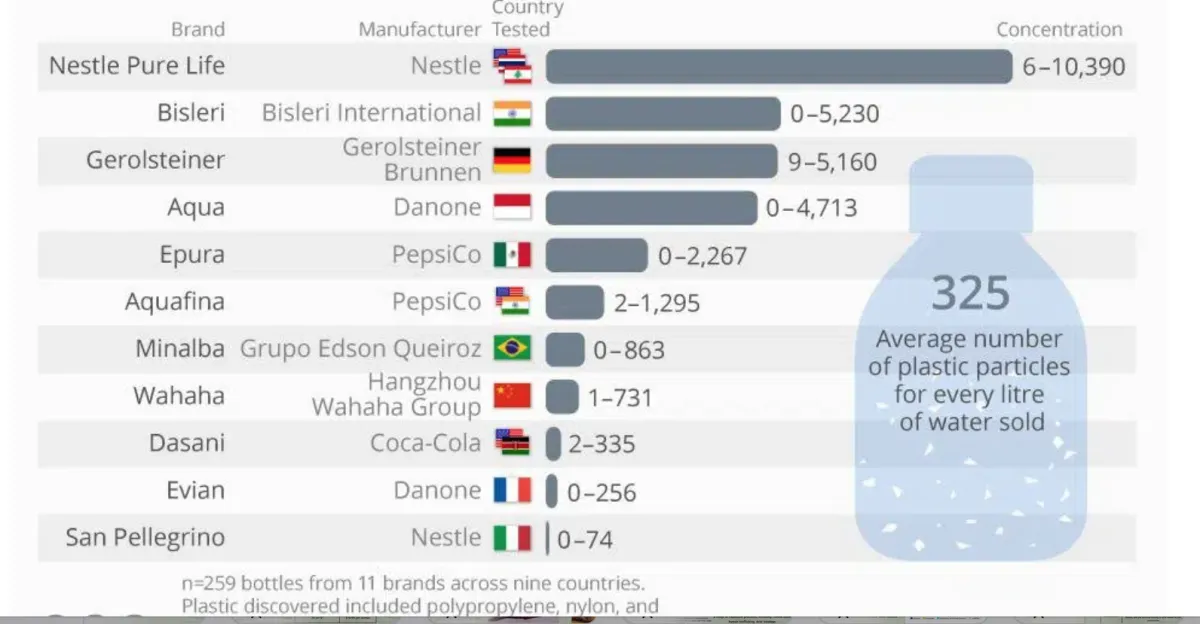Eco-Mindful Musings
Sustainable Lifestyle Diaries
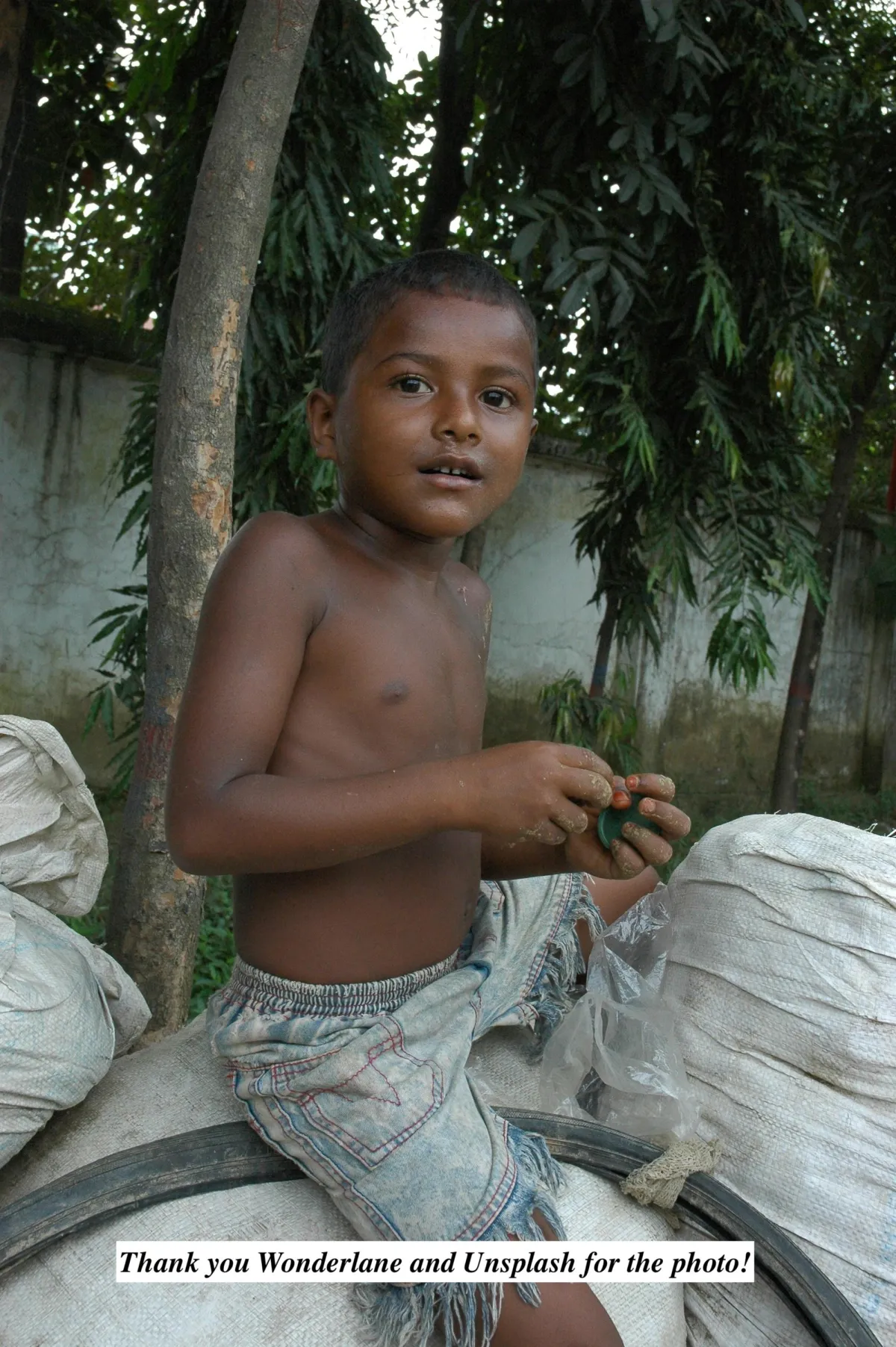
Chocolate and Child Labor
Children are exploited through the chocolate industry and big brands like Nestle, Mars and Hershey aren't doing enough to combat the issue.
THE DARKER SIDE OF CHOCOLATE
As Halloween creeps closer, it's time for playful costumes, spooky fun, and, of course, mountains of candy! Yet, beneath the sweet surface of our beloved chocolate treats lurks a chilling reality. The chocolate filling our trick-or-treat bags may have a dark origin, harvested by small hands in Africa. The U.S. Department of Labor reveals that over 1.5 million children labor in the cocoa fields of Ghana and Ivory Coast, regions responsible for 60% of the world's cocoa (USA Today).
These young workers endure hazardous conditions, from handling dangerous chemicals to working in sweltering fields and lifting heavy loads. Despite commitments from major chocolate brands to address child labor, these serious issues persist, casting a long shadow over the industry.
But this isn't just about chocolate. The cocoa industry is caught in a vast web of modern slavery, a global crisis affecting 40.3 million people. Human trafficking, a monstrous $150 billion-a-year enterprise, exploits the vulnerable worldwide.
Chocolate, a cherished treat globally, is tainted by a troubling history of worker exploitation. It's vital for chocolate lovers to ensure their indulgence doesn't harm others. In the U.S., there's a significant chance that a chocolate bar is linked to child labor. Two-thirds of the world’s cocoa comes from West Africa, where a 2015 U.S. Labor Department report found over 2 million children engaged in hazardous labor (Washington Post). Major brands like Hershey, Mars, and Nestlé have failed to guarantee their chocolates are free from child labor.
West Africa produces about 70% of the world's cocoa, much of which is exported to America. The U.S. Department of Labor reported last year that 1.56 million children are working on cocoa farms in Ivory Coast and Ghana (Humanium). Despite the industry's $103 billion annual sales, efforts to eliminate child labor have been insufficient, with only $150 million spent over 18 years without significant progress.
The industry's most notable attempt to address this involves purchasing cocoa certified for ethical practices by third-party organizations like Fairtrade and Rainforest Alliance. However, this initiative is weakened by inadequate enforcement of child labor rules, with inspectors visiting fewer than 10% of cocoa farms (Green America).
Antonie Fountain, managing director of the Voice Network, criticized companies for minimal efforts, stating, “It’s always been too little, too late. It still is.” He emphasized the lack of consequences for failing to meet child labor eradication goals, highlighting the absence of fines or prison sentences (Food Empowerment Project).
According to the U.S. Labor Department, most child laborers in the cocoa industry work on their parents’ farms, engaging in dangerous tasks such as handling machetes, carrying heavy loads, and spraying pesticides. A smaller group, trafficked from nearby countries, face even more severe conditions (Washington Post).
During a March visit to Ivory Coast’s cocoa regions, journalists from The Washington Post interviewed 12 children from Burkina Faso working on cocoa farms. Without parental accompaniment, these children were paid meager wages, with intermediaries taking a significant cut (YouTube).
As someone with a sweet tooth, I understand the allure of chocolate. I first discovered the problem when a young advocate, one of my students (at the time), implored me to find an alternative to the treats I was offering my students as rewards. She found the widespread inaction and indifference disheartening.
Armed with this knowledge, we now have the chance to turn our indulgence into a force for good!
By choosing ethically sourced chocolate, we can ensure our treats aren't tainted by exploitation!
Hope shines brightly! We hold the mighty power to ignite change and rewrite the narrative. By rallying together to demand corporate accountability, championing government efforts to uplift survivors, and opening doors to education and safe migration, we can take a stand against human trafficking and exploitation. Let's unleash our collective strength and be the heroes of a fairer world!
Every dollar you spend can be a vote for a more sustainable and equitable world. By supporting brands that prioritize fair labor practices, you can help drive change in the chocolate industry. A wonderful place to start is by shopping on anthroevolve.com, where you can find products that align with your values.
Remember, you have the power to make a difference. Let’s turn our love for chocolate into a movement for positive change! Together, we can create a world where everyone benefits from the sweetness of chocolate!
USA Today: "Halloween candy: The chocolate you buy may be tainted by child labor"
The Washington Post: "Chocolate and Child Labor"
Green America: "Chocolate Scorecard"
Food Empowerment Project: "Slavery in the Chocolate Industry"
Textile/Apparel Industry
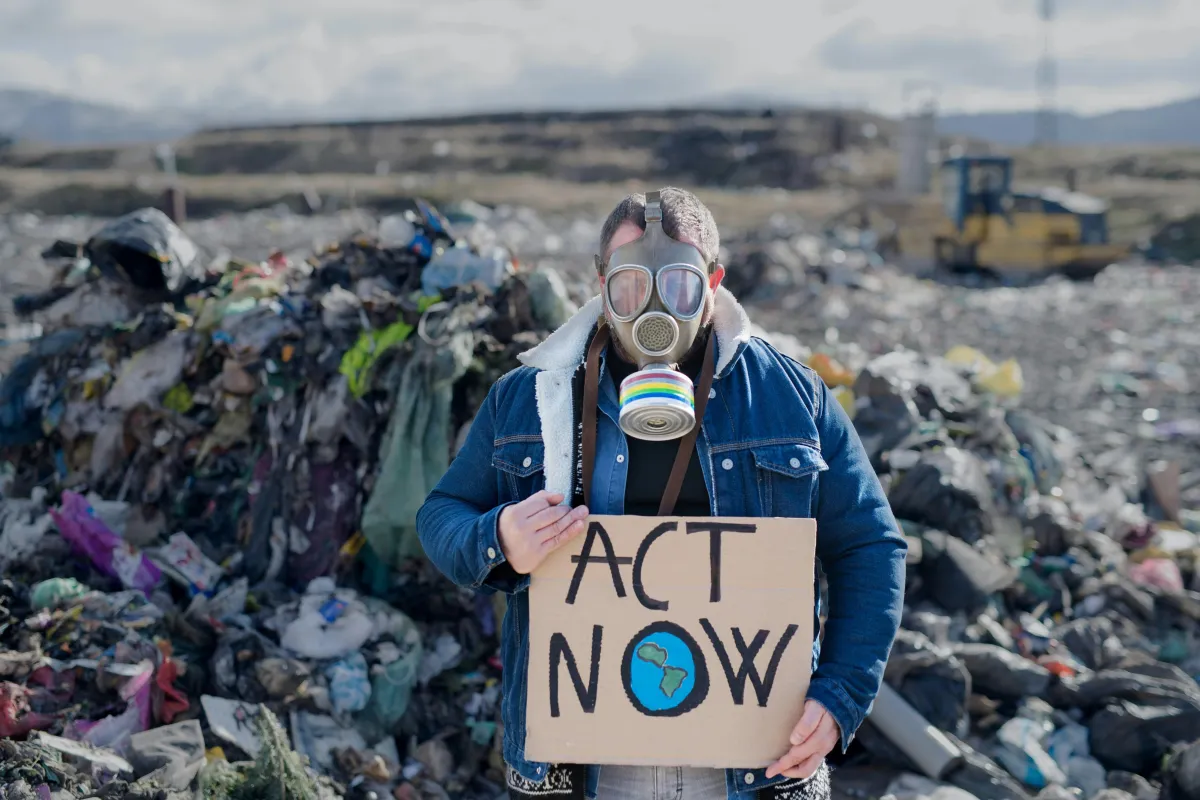
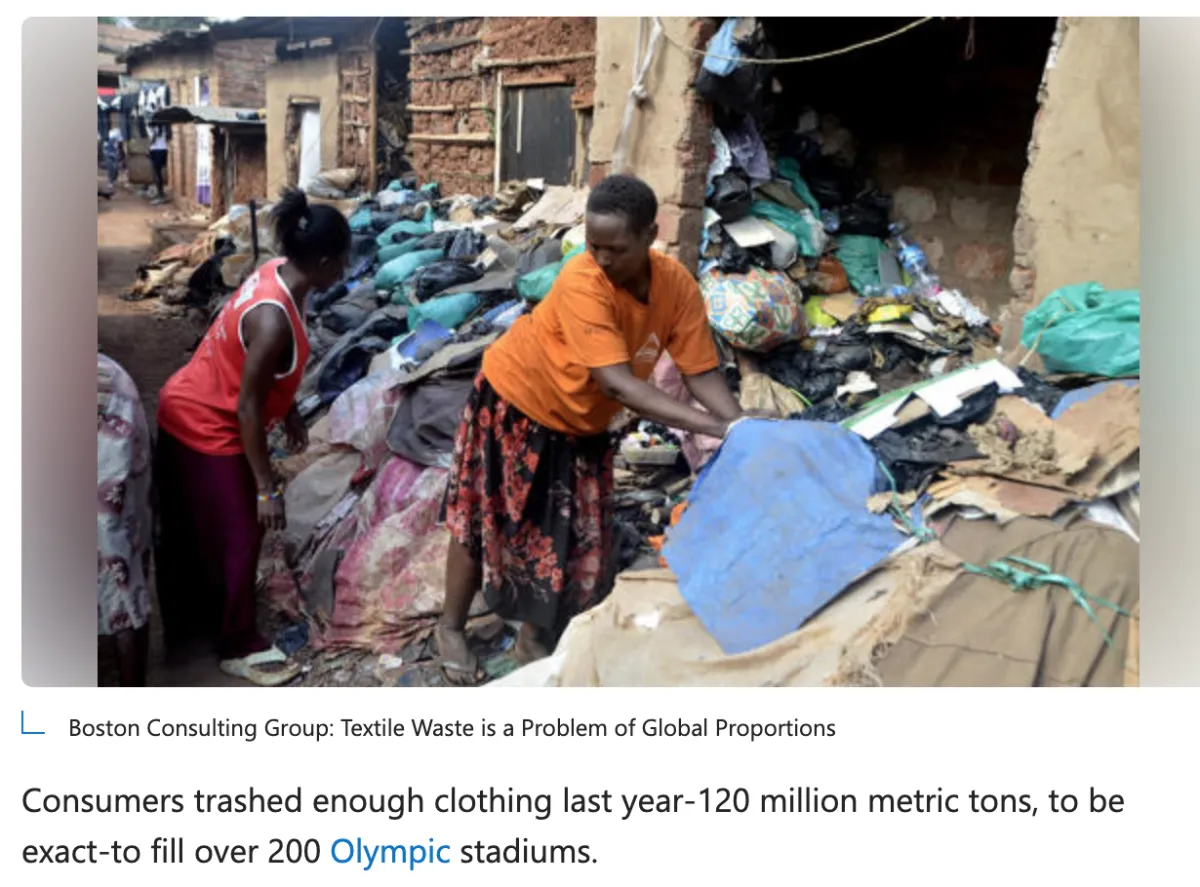
Workers in the textile industry face exploitation through systemic underpayment, forced labor, health risks and abuse, especially women.
The Hidden Realities of Fast Fashion
Child and Forced Labor Contribute to the Fashion Industry
The global apparel industry is worth about $1.7 trillion annually. According to watchdog groups, an estimated $161 billion worth of apparel and textile goods are at risk of being produced with forced labor and child labor which equate to modern-day slavery. An estimated 27 million people, and 160 million children are trapped in forced labor across the globe, many in the fashion industry.
Countries that use exploitive labor in textile production:
Bangladesh
Cambodia
North Korea
Pakistan
China
Ghana
Vietnam
If your textiles (apparel) are made in any of the countries above, you cannot be sure that the item was not produced with child or forced labor.
92 Million Tons of Textile Waste is Produced Every Year
The equivalent of a garbage truck full of clothes ends up on landfill sites every second. If the trend continues, the number of fast fashion waste is expected to soar up to 134 million tonnes a year by the end of the decade.
The Apparel Industry’s Global Emissions Will Increase by 50% by 2030
If a business-as-usual scenario prevails in the coming years – meaning that no action is taken to reduce fast fashion waste – the industry’s global emissions will likely double by the end of the decade.
The Average US Consumer Throws Away 81.5 lbs of Clothes Every Year
In America alone, an estimated 11.3 million tons of textile waste – equivalent to 85% of all textiles – end up in landfills on a yearly basis. That’s equivalent to approximately 81.5 pounds per person per year and around 2,150 pieces per second countrywide.
The Fashion Industry is responsible for 20% of global waste water.
Dyeing and finishing – the processes by which color and other chemicals are applied to fabrics – are responsible for 3% of global CO2 emissions as well as over 20% of global water pollution. Along with yarn preparation and fibre production, these two processes have the highest impacts on resource depletion, due to the energy-intensive processes based on fossil fuel energy.
Failure to Recycle Clothes and Under-wearing Clothes Costs $500 Billion.
The worst aspect of our reckless thrown-away culture is that the vast majority of clothes being tossed each year is not recycled. Globally, just 12% of the material used for clothing ends up being recycled. Much of the problem comes down to the materials our clothes are made from and inadequate technologies to recycle them. “The fabrics we drape over our bodies are complex combinations of fibres, fixtures and accessories. They are made from problematic blends of natural yarns, man-made filaments, plastics and metals.”
Nearly 10% of Microplastics Dispersed in the Ocean Each Year Comes from textiles.
Garments are a huge source of microplastics because so many are now made of nylon or polyester, both durable and cheap. Each wash and dry cycle, especially the latter, sheds microfilaments that move through our sewage systems and end up in waterways. It is estimated that half a million tons of these contaminants reach the ocean each year.
That’s the equivalent to the plastic pollution of more than 50 billion bottles. Do your part to prevent textile microfibers from ending up in our waterways with a coraball.
2.6 Million Tons of Returned Clothes ended up in Landfills in 202 in the US Alone.
Most of the items returned to retailers from consumers end up in landfill. This is mainly because it costs more to the company to put them back in circulation than to get rid of them. Reverse logistics company Optoro also estimates that in the same year, 16 million tonnes of CO2 emissions were created by online returns in the US in 2020 – the equivalent to the emissions of 3.5 million cars on the road for a year.
Stitched with Slavery in the Seams, Walk Free, Global Slavery Index
Ellen MacArthur Foundation, Extended Producer Responsibility (EPR) Policy Can Tackle Textile Waste
Global Fashion Agenda, Fashion on Climate
EPA, Textiles: Material - Specific Data
Earth.org, The Dark Side of Fast Fashion,
Earth, org, Are Microplastics Harmful and How Can We Avoid Them?
BBC, Why Clothes Are So Hard to Recycle
United Nations Environment Programme (UNEP), Putting the Brakes on Fast Fashion
Plastics, Plastics, Everywhere There's Plastics
Over the past 70 years, plastic production has surged dramatically, showing no signs of slowing. The boom began in the 1950s, with annual production skyrocketing nearly 230 times to reach 460 million tonnes by 2019.
Unfortunately, one to two million tonnes of plastic end up in our oceans each year, posing threats to wildlife and marine ecosystems.
Plastics are composed of long polymers, making them resistant to bio-degradation. Instead of biodegrading, plastics break into smaller pieces, persisting in the environment.
Nearly every piece of plastic ever made still exists today, except for a small fraction that has been incinerated.
Consequently, microplastics are now pervasive, found in the water we drink, the food we eat, the clothes we wear, and even the air we breathe. They've infiltrated every corner of the globe, from the highest mountains to the deepest ocean trenches.
The impact of plastic is both ecological and economic, affecting biodiversity, public health, coastal livelihoods, and critical sectors like tourism, fisheries, and agriculture.
A study found a measurable detrimental impact of $13- $28 million on the tourism industry due to plastic pollution.
Plastics aren’t readily recyclable.
Despite efforts, plastics aren't easily recyclable. Most plastics end up in landfills, with only about 5% being effectively recycled. As plastic production is set to triple by 2050, the problem is expected to worsen.
The vast majority of plastic that people use and in many cases attempt to recycle goes straight to the landfill.
The amount of plastic that is actually turned into new things is around 5%.
Waste management experts highlight the challenges: collecting and sorting plastics is costly and complicated due to the thousands of different types that can not be melted together.
Plastics degrade after a few uses, becoming more toxic when recycled.
Despite knowing these challenges, the plastic industry has spent millions promoting the notion that plastics are recyclable, leading the public to believe the system works.
If the public believes that plastic is recyclable and the system is working, we will be less concerned about doing anything about it.
In the last 70 years of the plastic explosion, less than 10% of it has ever been recycled.
Making new plastic has been easier and less expensive than making it out of plastic trash.
“There is no recovery from obsolete products, plastic degrades through each turn-over.”
“A degradation of resin properties and performance occurs during the initial fabrication, through aging, and in any reclamation process.”
Recycling is “costly,” and sorting it is “infeasible.”
"The costs of separating plastics ... are high," he tells colleagues, before noting that the cost of using oil to make plastic is so low that recycling plastic waste "can't yet be justified economically."
At a time when the plastics industry was coming under fire, the industry began a $50 million-a-year campaign promoting plastic.
Even with all the information out there, we are still arguing over plastic.
In August of this year, global talks halted even though 100 countries wanted to curb production of plastic but oil states insisted on pushing for a focus on recycling.
A new study reveals that we may have “breached Earth’s threshold for chemical pollution.” Not only does plastic contain a complex mixture of chemicals but it attracts other toxic chemicals. So when plastic becomes smaller and smaller, it turns into poison pills, absorbing and concentrating all types of toxic chemicals in the environment.
Increasing the reuse of plastics can increase the release of chemicals and uncontrolled recycling can further perpetuate the spread of hazardous chemicals. There can be over 16,000 unique chemicals present in plastic.
We find plastics in tea bags, seafood, meat, bottled water and the vegetables that we eat. Scientists estimate that an average human adult consumes the equivalent of one credit card per week in microplastics. Today we have found microplastics in human tissue, accumulating more in the brain than any other organ.
Microplastics enter our water supply through the laundry. Clothes made with nylon and other synthetic materials shed in the washing machine and dryer.
Microplastic beads (microbeads) are used in many toothpastes and beauty products. Obama signed a law banning microbeads in toothpaste and cosmetics in 2015.
Babies are being born with plastic in their stools. Microplastics can line and choke arteries.
Bioaccumulation of microplastics are found in human brains and are steadily increasing.
Microplastics have been found in human testicles and sperm.
While the outlook seems bleak, there are things you can do!
1. Obviously, reduce, reuse and recycle!
2. Ditch the plastic water bottles. Water bottles have up to 90 times more microplastics than tap water. This is so glaringly obvious but I used and re-used plastic bottles for YEARS. I loved them because they were more light-weight than metal bottles. I took them hiking - and I do a lot of hiking! I'm an idiot.
3. Get an NSF-certified water filter, and, yes, the filter is made of plastic but you can reduce microplastics shedding by ensuring only cold water runs through it.
4. Avoid storing food in plastic. Sunlight, acids in the food, washing in the dishwasher and physical wear and tear can degrade plastic.
5. Avoid reusing single-use plastics for food and drinks. This one hurts. I reuse all the single use utensils, cups and takeout containers that I acquire. I guess that stops today.
6. Don’t heat plastic. Avoid microwaving or heating food in plastic (including teabags, use a stainless steel strainer instead). Use glass or ceramic.
6. Wash plastic by hand, do not run it through the dishwasher. The heat leads to microplastics shedding.
7. Use wood or bamboo cutting boards. This is so obvious, but I used a plastic cutting board for years! Duh.
8. Clean your air. Reducing air born dust may reduce your exposure to inhaled microplastics.
9. Consider silicone instead of plastic! Check out Gosili! Our silicon partner!
10. Using a cora ball in the washing machine prevents up to 30% of microplastics from entering the water ways.
10.Try to avoid purchasing products in plastic! My website offers several alternatives: https://anthroevolve.myshopify.com/
By taking these actions, you can help mitigate the impact of plastics on our environment and health!
Bibliography:
Mapping Chemical Complexities of Plastics, Nature July 2025
We’ve Breached Earth’s Threshold of Chemical Pollution, Study Says, Jan 2022
Microplastics Pose Risk to Ocean Plankton, Climate, Other Key Earth Systems, Oct 2023
Global Plastics Talks Collapse as Countries Remain Deeply Divided, BBC Aug 2025
Plastics Make It Possible, 1997
How Big Oil Misled Public Into Believing Plastic Would Be Recycled, NPR Sep 2020
Not Just Trash: Why Plastic Pollution is an Economic & Ecological Emergency, Oct 2025
Even Mt Everest, the World’s Tallest Peak Can’t Escape Microplastics, Smithsonian Mag Nov 2020
Plastic Bag Found at the Bottom of World’s Deepest Ocean Trench, National Geographic Apr 2025
Microplastics and Our Health: What the Science Says, Stanford Jan 2025
Bioaccumulation of Microplastics in Decedent Human Brains, Nature Feb 2025
Our World in Data: Plastic Pollution, Oct 2023
How Microplastics are Infiltrating the Food You Eat, BBC Jan 2023
Getting Microplastics Out of Our System, Harvard Public Health Dec 2023
Americans Eat and Inhale Over 70,000 Plastic Particle Each Year, Time Jun 2019
Microplastics Are Everywhere. Here’s How to Avoid Eating Them, NY Times Apr 2025
The Economic Cost of Plastic Debris in East Africa, May 2023
Every Single Piece of Plastic Ever Made Still Exists. Here’s the Story., Jan 2017
Recycling Plastic is Practically Impossible—and the Problem is Getting Worse, NPR Oct 2022
Baby Poo Has Ten Times More Microplastics Than Adult Feces Smithsonian Mag Sep 2021
What Are Microplastics? NOAA, June 2024
The Microbead-Free Waters Act: FAQs
Study Finds Microplastics in 93% of Bottled Water, Forbes Mar 2018
Plastic Junk? Researchers Find Tiny Particles In Human Testicles, NPR May 2024
The World is Pumping Out 57 Million Tons of Plastic Pollution a Year, Sep 2024
Our Best Friends
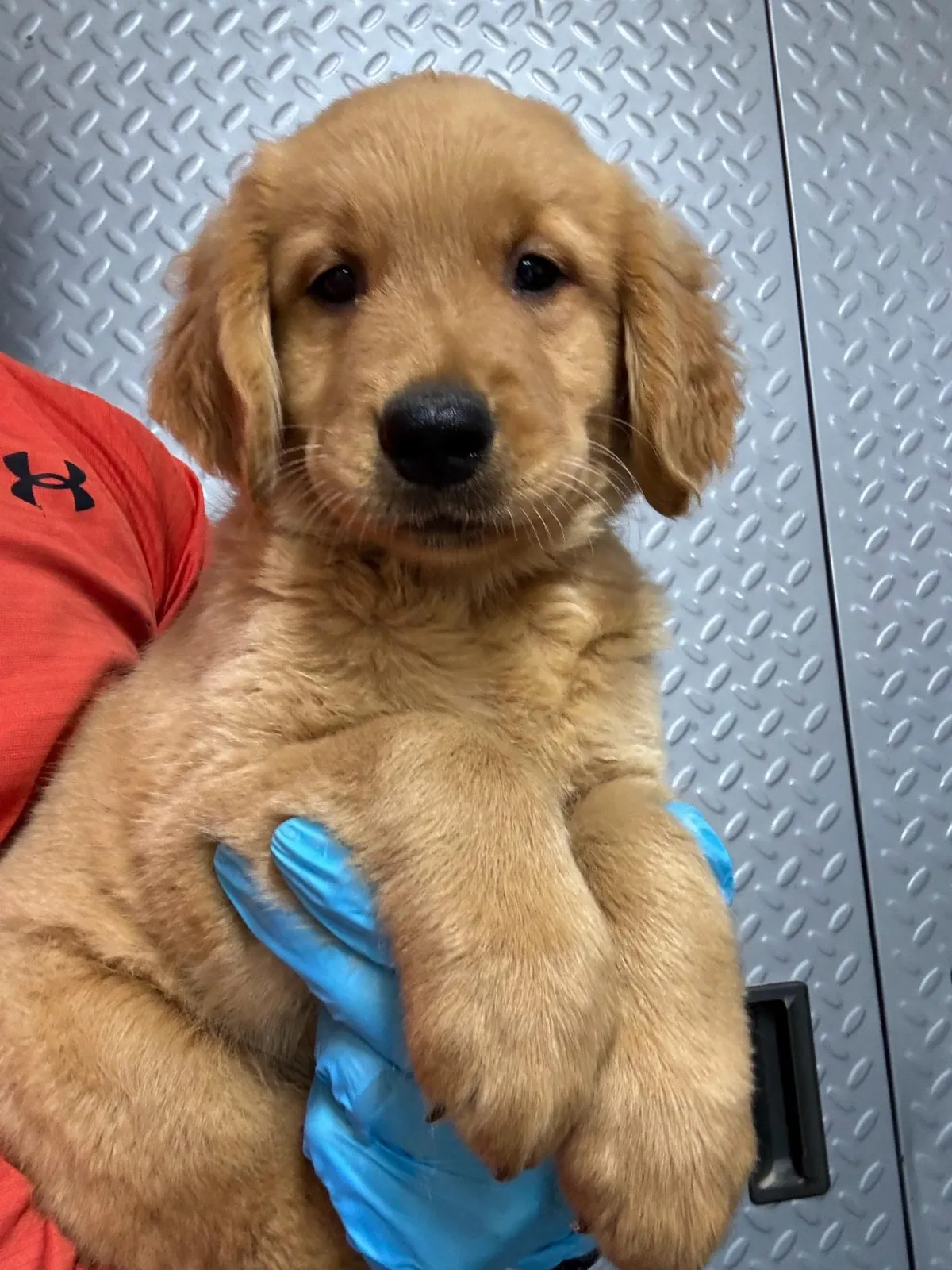

We Love Our Pets!
We love our pets but they can do a lot of damage!
Hello, wonderful nature enthusiasts! 🌿 AnthroEvolve Coop here, bringing you a heartfelt message that’s as playful as it is passionate! 🐾
Let's dive into a topic that's close to my heart: our beloved dogs and their impact on wildlife. Now, I'm no saint—I let my furry friend roam freely, a decision that led to a heartbreaking loss when she was hit by a car. It's a lesson I carry with me every day.
Dogs are the most common large carnivore in the world. The environmental impacts of owning a dog are extensive and multifarious; they are implicated in direct killing and disturbance of multiple species, particularly shore birds. Their presence disturbs birds and mammals - causing them to leave areas where dogs are a regular presence.
Dog feces and urine can transfer pathogens to wildlife, pollute waterways and impact plant growth.
Dogs that enter waterways contribute to toxic pollution through wash - off of chemical parasite treatment applications. Many of these applications contain potent neurotoxins. These chemicals have been linked to neurological issues, birth defects and memory loss. The FDA has warned of a risk of seizures in dogs and cats treated with certain flea and tick products; which include Bravecto, Credelio, and Nexgard.
Whether you apply the flea treatment topically or orally to your pet, it ends up in the environment. Flea collars are likely to contain Tetrachlorvinphos (TCVP) and can be extremely dangerous to pets, their owners, especially young children and pregnant mothers.
These products are ending up in our water supplies and are harmful to wildlife. They contribute to 20-24% of wastewater pollution.
Your dog may not require this type of treatment.
When looking for flea medicine, find ones without the following ingrediants: fipronil, premethrin, imidacloprid, dinotefuren, nitenpyram.
There are other alternatives to flea and tick treatments, check out Learn Fetch, a company dedicated to conscious canine care!
There are also home remedies that actually work! Check out: https://www.pranapets.com/blogs/pet-health/homemade-remedies-for-fleas-ticks-effective-solutions
The numbers are staggering! In the Greater Yellowstone area, there are about 2,000 grizzlies, wolves, and mountain lions combined. Yet, on a sunny summer day, you'll find a hundred times more dogs, many gallivanting without a leash.
Many scientific studies have revealed that our canine companions can alter the natural patterns of wildlife like mule deer, small mammals, prairie dogs, and bobcats.
These creatures become less active up to 100 meters from trails frequented by dogs—a significant stretch considering the vast network of trails in our public lands.
The presence of dogs in wildlife habitat causes stress, which, over time, may increase an animal's energetic needs and suppress it's immune system making it vulnerable to sickness, disease and predation.
Even more concerning, dogs that regularly explore certain areas can drive wildlife away permanently reducing the amount of functionally available habitat. Free-roaming dogs and sensitive wildlife simply can't share the same space harmoniously.
It's estimated that there are one billion dogs worldwide, and across the globe, dogs harm species that are listed as endangered or vulnerable. Remember, in Colorado, it's illegal for your dog to chase wildlife!
The blunt truth: people with dogs are much more harmful to wildlife than without and off-leash dogs can cause severe damage to wildlife and unravel the wild spaces they invade.
I've already shared a video on the environmental impact of dog waste, and let's be honest, it's tough to clean up after our pups if they're out of sight!
So, if you cherish the vibrant flora and fauna of our beautiful planet, let's take a stand together: leash your dog, scoop the poop, and remember, AnthroEvolve Cooperative is your go-to for conscientious consumer choices. Until next time, keep loving our Earth! 🌎🐶💚
Bibliography
Bad Dog? The Environmental Effects of Owned Dogs, Mar 2025
Certain Flea and Tick Meds Can Cause Adverse Reaction in Pets, FDA Warns, Oct 2023
Flea Treatment is Toxic to Wildlife: Here are the Facts May 2024
10 Homemade Remedies for Fleas and Ticks That Actually Work, Mar 2024
Consumer Alert: Flea and Tick Prevention Pet Products Containng Dangerous TCVP, Jul 2022
Poison on Pets II Toxic Chemicals in Flea and Tick Collars, Apr 2009
Pollutants in Breast Milk: A Scoping Review of the Most Recent Data in 2024
Domestic Dogs and Unintended Impacts on Wildlife, Nov 2023
Dogs' Becoming Major Threat to Wildlife Feb 2019
CPW Reminds Residents it's Illegal for Dogs to Chase Wildlife, Oct 2021
Man's Best Friend may be Nature's Worst Enemy, Study on Pet Dogs Suggests, Apr 2025
The Impact of Dogs on Wildlife, Apr 2016
The Doggoned Truth--Domestic Canines Are Not Wildlife's Best Friends, May 2023
Cats and Wildlife
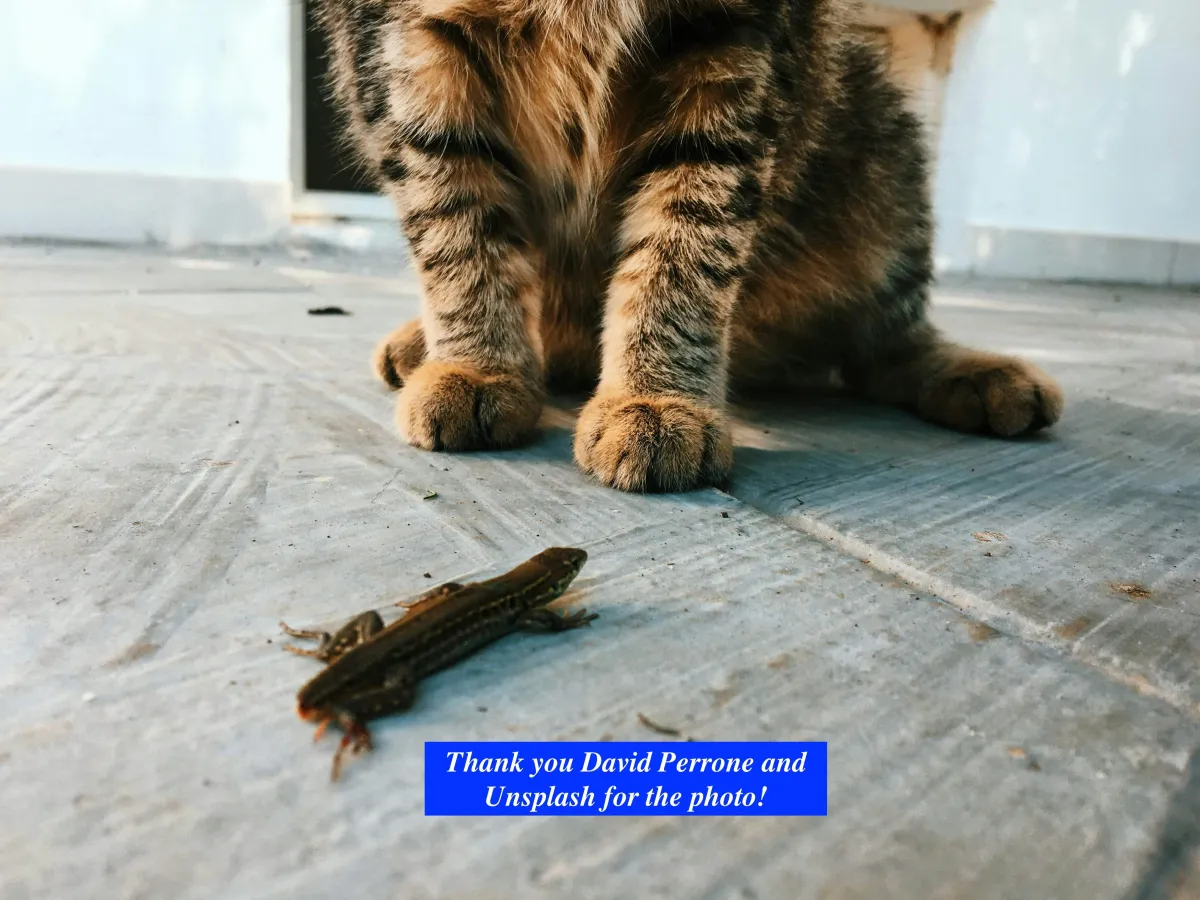

Cats are Responsible for Driving at Least 63 Species to Extinction
Your Paragraph text goes Lorem ipsum dolor sit amet, consectetur adipisicing elit. Autem dolore, alias, numquam enim ab voluptate id quam harum ducimus cupiditate similique quisquam et deserunt, recusandae. here
